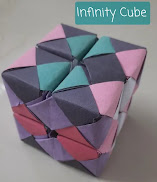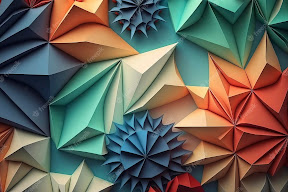TYPES OF ORIGAMI
Origami has different types as well, and it's a great thing. In fact, folding paper counts as the art of origami, regardless of culture and origin. Now let's check out the different types of origami:
1. ACTION ORIGAMI: This kind of origami can be animated. For example, the flapping bird( crane ) is a part of action origami. Models in which the final assembly includes blowing up a water bomb, are also classified as action origami. Action origami toys are meant to amuse, but some are designed to inspire wonder. Basically, if an origami model requires some sort of action, such as pulling, inflating, rolling, and more, for the enhancement of the final creation, it can very well be considered a part of action origami. Some examples of action origami are the Jumping Frog and the traditional origami crane.
2. MODULAR ORIGAMI: The kind of origami in which you use two or more sheets of paper and join them using origami techniques to create a much larger model is called modular origami. One can also term this unit origami because several units of paper are joined together to form a complete model. Each piece of paper is folded into a unit of a particular model, then several of them are made and inserted into one another through flaps or pockets. These insertions create friction/tension that holds the model tight. Check out this beautiful swan and this Infinity Cube I made while watching the instructions in a video on YouTube:
3. ORIGAMI TESSELLATIONS: A tessellation is a collection of figures filling a plane without any overlaps or gaps. In origami, pleats are used to connect molecules such as twist folds together in a repeating fashion. What is a pleat? Well, you remember that paper fan we used to make in our childhood? That's called a pleat. You can call a tessellation, a pattern, perhaps. Some examples of tessellations are given below:
4. KIRIGAMI: Kirigami is a variation of origami. It is a Japanese term for paper cutting. In Kirigami, you fold the paper, as well as cut the paper, resulting in a beautiful 3D design that stands away from the paper. Typically, Kirigami starts with a folded design, which is then unfolded, after which we cut the paper at the specific creases for the model to stand out to get the finished creation. One can get to see symmetry at its best in Kirigami models! An example of kirigami is as follows:
















